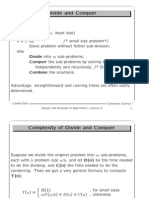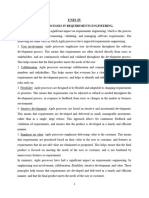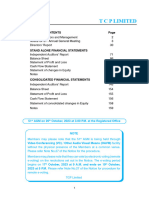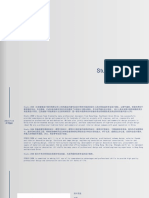0% found this document useful (0 votes)
4 views25 pagesFile 3
The document discusses the Divide and Conquer algorithm design strategy, which involves dividing a problem into smaller instances, solving them recursively, and combining their solutions. It provides examples of this technique through Mergesort and Quicksort, detailing their processes and efficiency analyses. Mergesort consistently achieves Θ(n log n) efficiency, while Quicksort has varying efficiencies depending on the case, with best and average cases at Θ(n log n) and worst case at Θ(n²).
Uploaded by
minanessim100Copyright
© © All Rights Reserved
We take content rights seriously. If you suspect this is your content, claim it here.
Available Formats
Download as PDF, TXT or read online on Scribd
0% found this document useful (0 votes)
4 views25 pagesFile 3
The document discusses the Divide and Conquer algorithm design strategy, which involves dividing a problem into smaller instances, solving them recursively, and combining their solutions. It provides examples of this technique through Mergesort and Quicksort, detailing their processes and efficiency analyses. Mergesort consistently achieves Θ(n log n) efficiency, while Quicksort has varying efficiencies depending on the case, with best and average cases at Θ(n log n) and worst case at Θ(n²).
Uploaded by
minanessim100Copyright
© © All Rights Reserved
We take content rights seriously. If you suspect this is your content, claim it here.
Available Formats
Download as PDF, TXT or read online on Scribd
/ 25






























































































